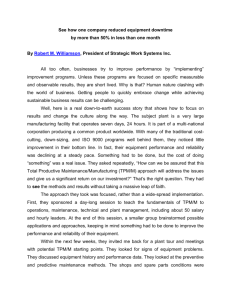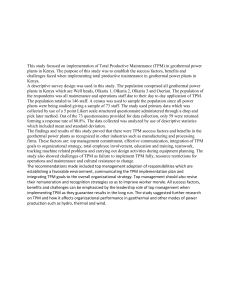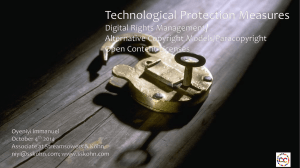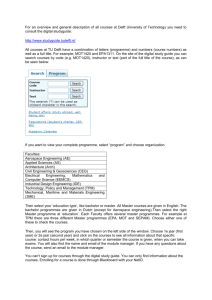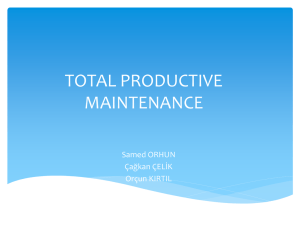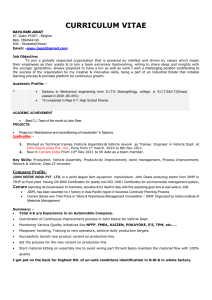Assessing the Impact of Time & Place Management Frequently Asked Questions
advertisement
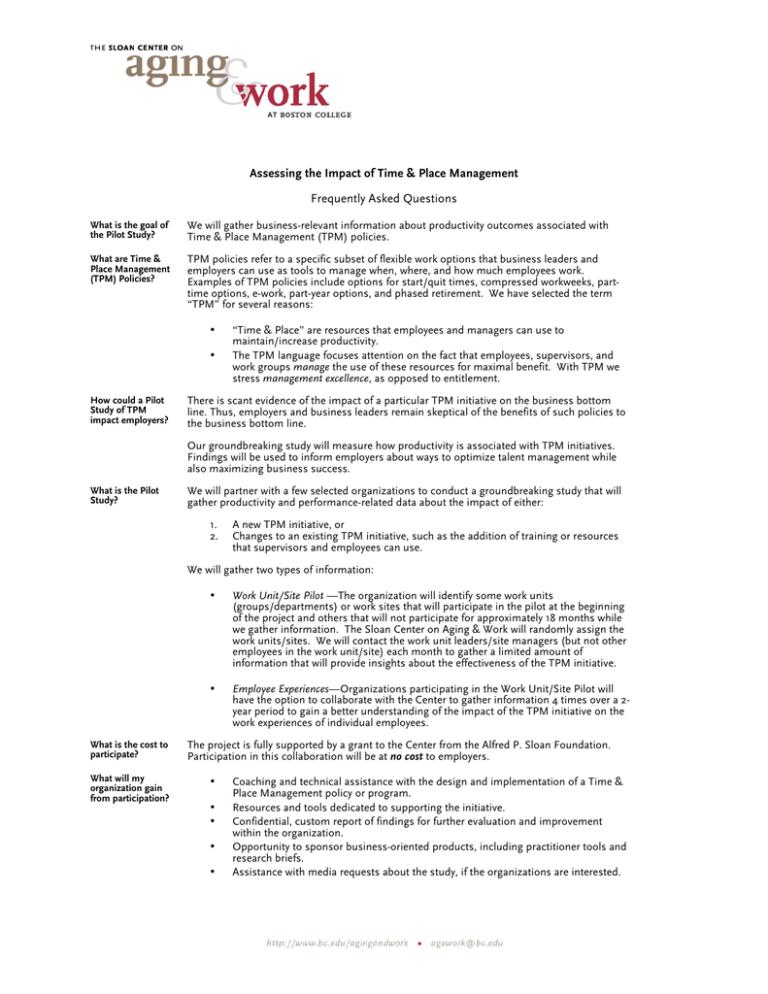
Assessing the Impact of Time & Place Management Frequently Asked Questions What is the goal of the Pilot Study? We will gather business-relevant information about productivity outcomes associated with Time & Place Management (TPM) policies. What are Time & Place Management (TPM) Policies? TPM policies refer to a specific subset of flexible work options that business leaders and employers can use as tools to manage when, where, and how much employees work. Examples of TPM policies include options for start/quit times, compressed workweeks, parttime options, e-work, part-year options, and phased retirement. We have selected the term “TPM” for several reasons: • • How could a Pilot Study of TPM impact employers? “Time & Place” are resources that employees and managers can use to maintain/increase productivity. The TPM language focuses attention on the fact that employees, supervisors, and work groups manage the use of these resources for maximal benefit. With TPM we stress management excellence, as opposed to entitlement. There is scant evidence of the impact of a particular TPM initiative on the business bottom line. Thus, employers and business leaders remain skeptical of the benefits of such policies to the business bottom line. Our groundbreaking study will measure how productivity is associated with TPM initiatives. Findings will be used to inform employers about ways to optimize talent management while also maximizing business success. What is the Pilot Study? We will partner with a few selected organizations to conduct a groundbreaking study that will gather productivity and performance-related data about the impact of either: 1. 2. A new TPM initiative, or Changes to an existing TPM initiative, such as the addition of training or resources that supervisors and employees can use. We will gather two types of information: What is the cost to participate? What will my organization gain from participation? • Work Unit/Site Pilot —The organization will identify some work units (groups/departments) or work sites that will participate in the pilot at the beginning of the project and others that will not participate for approximately 18 months while we gather information. The Sloan Center on Aging & Work will randomly assign the work units/sites. We will contact the work unit leaders/site managers (but not other employees in the work unit/site) each month to gather a limited amount of information that will provide insights about the effectiveness of the TPM initiative. • Employee Experiences—Organizations participating in the Work Unit/Site Pilot will have the option to collaborate with the Center to gather information 4 times over a 2year period to gain a better understanding of the impact of the TPM initiative on the work experiences of individual employees. The project is fully supported by a grant to the Center from the Alfred P. Sloan Foundation. Participation in this collaboration will be at no cost to employers. • • • • • Coaching and technical assistance with the design and implementation of a Time & Place Management policy or program. Resources and tools dedicated to supporting the initiative. Confidential, custom report of findings for further evaluation and improvement within the organization. Opportunity to sponsor business-oriented products, including practitioner tools and research briefs. Assistance with media requests about the study, if the organizations are interested. What are some examples of the kinds of TPM policies that organizations might implement? What are some examples of outcome measures that organizations might use to assess the impact of the TPM initiative on the work unit/site? What is the role of the employer in the study? • • Allow remote work on a regular basis Allow hourly employees to select available work hours through an online system Give hourly associates more advanced notice of upcoming work schedules Increase emphasis of TPM management as an important element of health and wellness programs Implement a phased retirement program Train supervisors to leverage TPM as a management tool for engaging employees • • • • • • Customer satisfaction Shrinkage Profit margins Unit performance measures Absenteeism rates for the work group Turnover rates for the work group • • • • We will ask the participating organizations to help with two sets of tasks: 1. Identify liaison(s) • to work with the Center to design the TPM policy or program (or improvement to an existing program); • to identify the productivity outcomes of interest to the organization; and • to specify target dates for key project tasks. 2. Identify sites, departments, or work units to be randomly assigned • half will participate in the TPM pilot from the beginning; and • half will participate in the TPM pilot after 18-24 months. If the organization chooses to participate in the Employee Survey, provide access to employees working at the sites involved in the project for a brief, 20 minute survey before the TPM policy (or policy improvement), and at 3 times over the course of the 18-24 months of the pilot. What is the project calendar? 1. 2. July 2011—January 2012 • Onsite visit to discuss TPM and outcome measures • Webinar orientation to the liaison team • Getting to know the organization with respect to TPM (Discovery Interviews with approximately 5-10 supervisors and 2-3 virtual group dialogue sessions with employees) • Onsite visit to present results of focus groups and interviews, discuss standards of excellence for the TPM of choice, and finalize the memo of understanding between researchers and firms. January 2012-December 2013 • Work Unit/Site Data Collection—Brief (15-minute) check-ins with managers on a regular basis, monthly or bi-monthly. • Employee Experience Surveys (Optional) Questions? Please contact Samantha Greenfield, Employer Engagement Specialist Sloan Center on Aging & Work samantha.greenfield@bc.edu 617-552-9117
